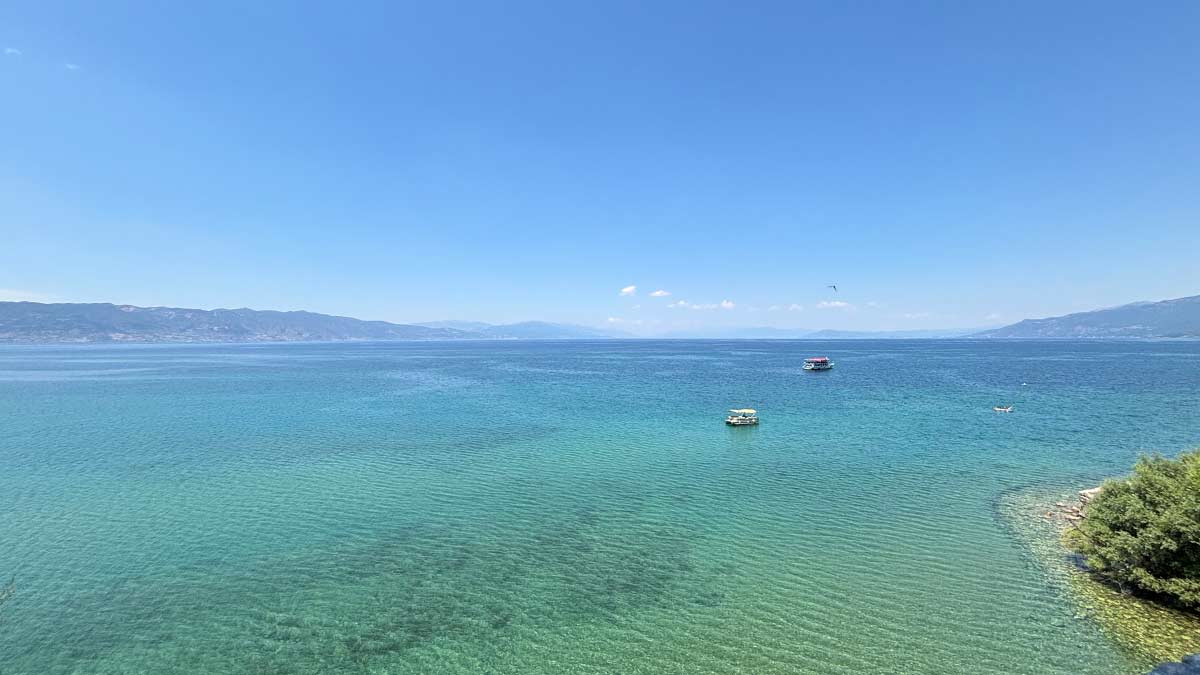Lake Ohrid: Steeped in history, and natural beauty

As one travels along Lake Ohrid, one becomes captivated by its natural beauty, serenity, and vastness. It is one of Europe’s oldest and deepest lakes, lying on the border between North Macedonia and Albania, estimated to be between 1.3 and 2 million years old, making it one of the few ancient lakes in the world. It is renowned for its exceptional biodiversity, cultural richness, and breathtaking scenery.
Often called a “museum of living fossils” because of its unique and ancient ecosystem, it is home to over 200 endemic species, including the famous Ohrid trout. More than 130 bird species use the lake as a breeding or wintering ground. The city of Ohrid, situated on the lake’s northeastern shore, is a UNESCO World Heritage Site. It is also celebrated for its medieval churches, monasteries, and ancient ruins. Furthermore, it is a strategically important region in the Balkans.
From the 14th to the 20th century, the area around the lake was under Ottoman control and experienced significant cultural and religious changes. During the Balkan Wars of 1912-1913, it became a frontline zone between the competing Balkan states of Serbia, Bulgaria, and Greece. In World War I, Western Macedonia, including the Ohrid region, was affected by military operations between the Central Powers and the Allied forces. The lake was close to strategic supply routes. In World War II, the Axis powers, primarily Bulgaria—an ally of Nazi Germany at the time—occupied North Macedonia.
After WWII, Ohrid became part of the Socialist Republic of Macedonia within Yugoslavia. In 2001, an ethnic Albanian insurgency took place in parts of North Macedonia, with the city of Ohrid playing a significant diplomatic role. The Ohrid Framework Agreement, signed in August 2001, settled the conflict by granting greater rights and recognition to ethnic Albanians in North Macedonia.
The cultural evolution of Lake Ohrid is closely linked to the history of Balkan life and society. Its shores, around the city of Ohrid, have been a centre of literacy, religion, and art, playing a crucial role in the spiritual and cultural development of the Slavic world and Byzantine influence across Europe. It acts as a cultural bridge between East and West, Christianity and paganism, ancient and modern civilisation. Its contribution to developing Slavic literacy, Orthodox Christianity, and Byzantine cultural heritage makes it one of Europe’s most significant historic regions.
Under Byzantine rule from the 4th to the 9th centuries, Ohrid became an early centre of Christianity. With the construction of Christian basilicas, many featuring intricate floor mosaics, monastic life flourished. The 9th to 11th centuries marked a golden age, coinciding with the rise of Slavic literacy. Saints Cyril and Methodius developed the Glagolitic alphabet; their disciples, Saints Clement and Naum, further refined the Cyrillic alphabet in Ohrid. The Ohrid Literary School influenced Slavic regions well beyond Macedonia.
In the 19th century, Ohrid played a role in Balkan national revivals, especially for Macedonian and Bulgarian identities. In the 20th and 21st centuries, Ohrid remains an important cultural and religious centre, hosting festivals such as the Ohrid Summer Festival of classical music, opera, and drama. Ohrid is also known as the “Jerusalem of the Balkans.”
Walking around the lake evokes a sense of nature's vastness and the human urge to control it, often unsuccessfully.
Arun Kumar Sahu is Ambassador of India to Bulgaria and North Macedonia.
Tourism